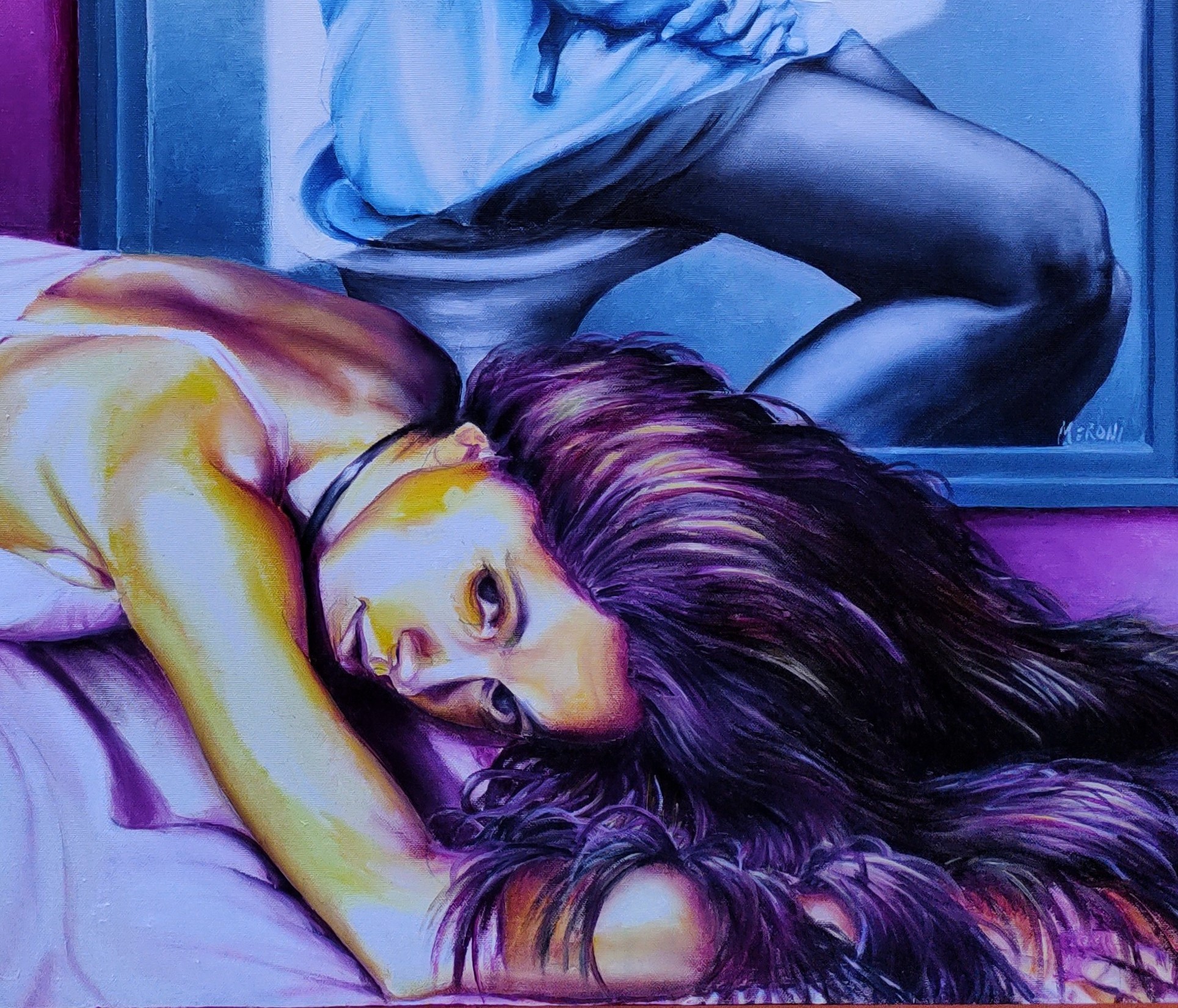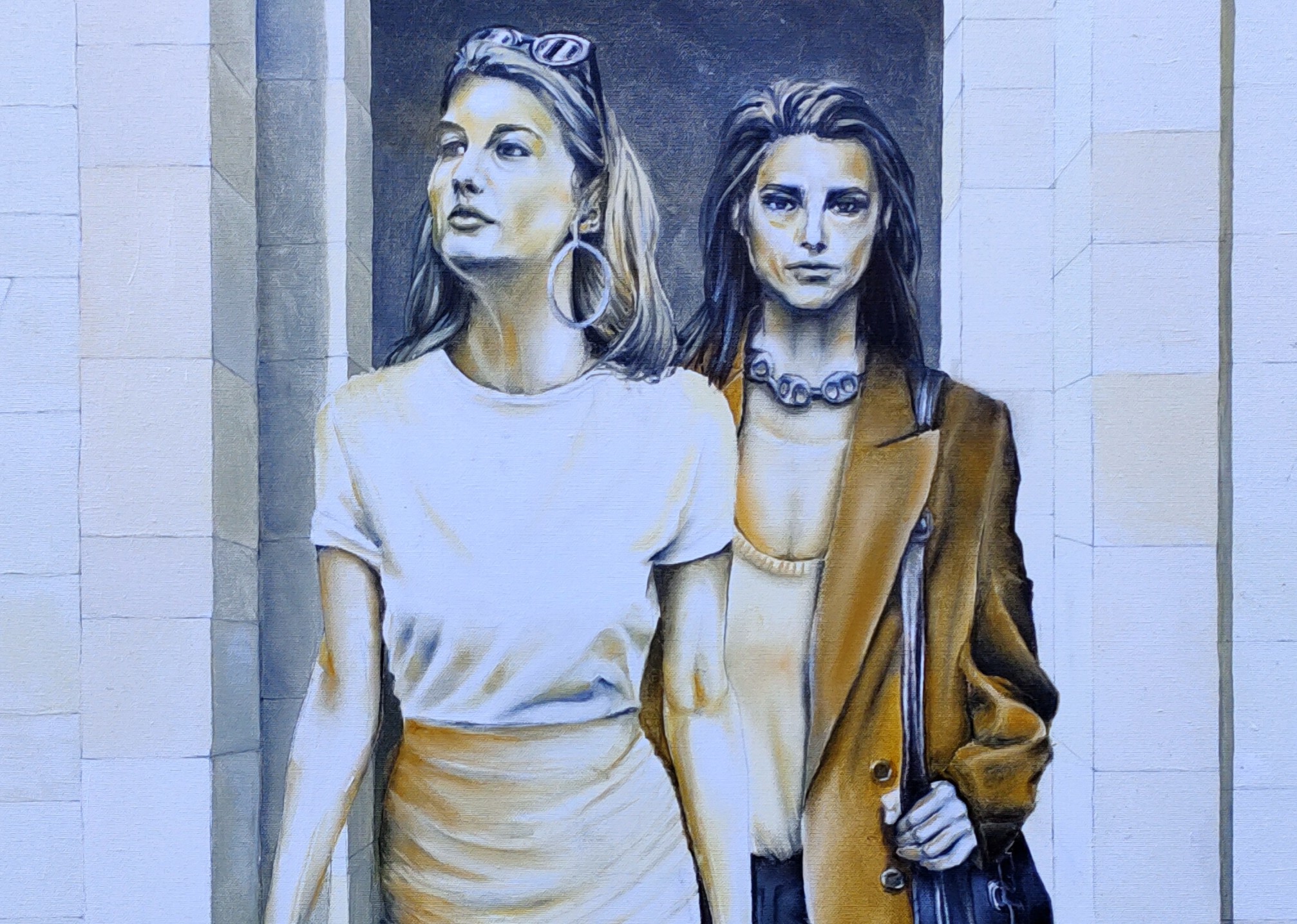
MODERN, ELEGIAC
THE NEVER BANAL TORMENT OF LIVING
Prof. Valentino Michelotti
Here follows the section of works characterized by oil painting, where the Artist embarks on a journey entirely focused on the figure, which becomes the absolute protagonist of the new works. The subjects may be portraits of people known to the Artist, captured in the present or the past, occasional and unaware passersby, or taken from television frames, advertisements, etc. The choice always leans, as much as possible, towards poses that are not the typical ones a person assumes when they know they are being portrayed, as the Artist is not so much interested in the pleasant rendering of a subject, but rather in capturing them in a moment of emotional intensity to bring out as much as possible the symbolic-psychological aspect related to the subject. This will result in works that evoke nostalgia for the past, for friendship, or feelings of waiting, despair, and disillusionment. While the figures are drawn from real life and rendered with a marked realism, sometimes incorporating hyper-realistic details, the environments, to highlight the subjects, are often essential, sometimes limited to a single light, the sky, or simplified settings that are almost metaphysical (walls, steps, arches, bare interiors).
The technique used, as mentioned, is the traditional oil painting on medium/large canvas, without any particular experimentation with other techniques, which are considered unnecessary and non-functional for what the Artist wants to represent. The color palette in each painting rarely exceeds 4-5 colors (including white and black). This allows the Artist to focus on precise strokes, without too many chromatic temptations, strongly highlighting the expressions of the face, the gazes (rarely directed at the viewer), the signs of time, the emotions of the subject, and the folds of the clothing, which often appear more “tormented” than the actual scene, with the aim of emphasizing the range of feelings experienced by the subject or evoked by the depicted scene.
It is in this sense that the entire work of the Artist to date can be referred to as “Modern Elegiac.” Modern because both the aesthetics and the poetics (understood as “content” and “the way of expressing the content”) of his work are certainly not classical, but neither are they experimental or forcedly hyper-contemporary. Elegiac because the Artist nonetheless wants to address the sentimental/emotional sphere of those who approach his works.
The Artist’s production is divided into two main strands, referred to as “clusters.”

CLUSTER I: “The last, eternal day of summer”
(…) / The grass was greener / The light vas brighter / The taste was sweeter / The nights of wonder / With friends surronded / The dawn mist glowing / The water flowing / The endless river / Forever and ever.
(from “High Hopes” – Pink Floyd – “The Division Bell” Album – 1994)
“Whatever the interpretation of our life may be, one cannot overlook the incontrovertible fact that it is made up of a succession of days, and in some of these days our earliest hopes, the formation of our feelings, our first loves, and selfless friendships are indissolubly fixed…” These are certainly the most “elegiac” works, in which the main theme is the representation of a moment, of a beautiful and special period like the last day of summer, eternal because, in memory, it is as if we could continue to relive it.

CLUSTER II: “Sophisticated, Tormented”
In these works, the gaze rests in a disenchanted and vaguely ironic way on the metaphorical masks and armor that one must wear, more or less voluntarily, to relate to everyday life. We put on makeup to appear younger and more alluring; we dress elegantly because we must present ourselves as confident and resolute in order to compete, conquer, advance in our careers, and stand out… We must pretend to be what we are not, and thus what we show is a “sophisticated” version of ourselves, in the sense of altered, not genuine. However, one cannot maintain this act of pretense forever, and often it does not lead us to achieve our goals, resulting in disillusionment, disappointment, resignation, and the “tormented.” In this theme, the subjects, mostly female, are captured in a moment of self-awareness (or in the moment immediately preceding it), revealing themselves to themselves.